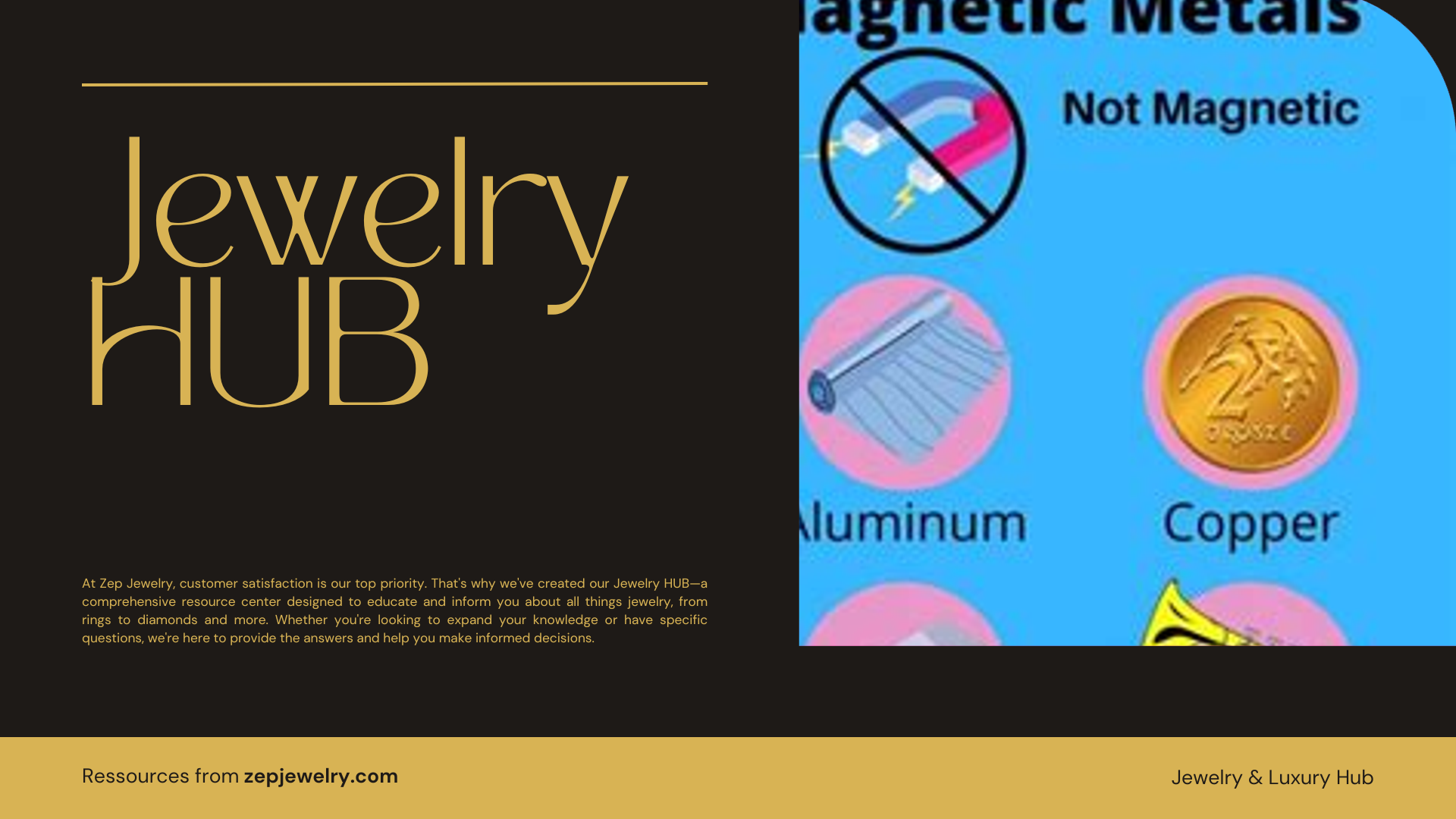Have you ever wondered why some jewelry pieces seem to have a mind of their own at the magnetic display cases of a craft show? While most people associate shininess with precious metals, the world of jewelry hides more than just glittering gemstones. In fact, certain metals like iron, nickel, and cobalt hold magnetic secrets that can attract more than just admirers. As we delve into the intriguing realm of magnetic jewelry, we’ll explore not only which metals are magnetic but also uncover whether your beloved gold or silver trinkets could possess hidden magnetic traits lurking beneath their lustrous surfaces.
Which jewelry metals are magnetic?
Which jewelry metals are magnetic?
In the world of jewelry, the metals that exhibit magnetic properties are primarily iron, nickel, and cobalt. These metals are often encountered in various forms and can sometimes be found in jewelry pieces as alloy components. It’s essential to note that while gold and silver are typically considered non-magnetic, there may be instances where items are silver or gold plated, potentially leading to some magnetic attraction due to hidden underlying magnetic metals.
Moreover, there are rare earth metals, such as neodymium, samarium, and gadolinium, which possess magnetic properties but are not commonly used in standard jewelry manufacturing. These metals are more often utilized in specific applications, such as industrial magnets and high-performance gadgets.
A fun fact to keep in mind is that if you have a piece of jewelry claiming to be “pure gold” and it does exhibit magnetic qualities, then it likely contains iron or nickel, which can signal authenticity issues. This can be a useful tip for spotting misleading pieces, especially considering that some less reputable sellers might coat cheaper metals like lead, aluminum, or copper with a thin layer of gold. Always be cautious—just because jewelry is non-magnetic does not automatically mean it is precious metal.
In summary, while a handful of metals associated with jewelry can be magnetic, the more precious materials like gold and silver generally are not. Therefore, if you’re testing authenticity with a magnet, remember that non-magnetism alone is not a foolproof verification method. Exploring other testing techniques, such as acid tests or consulting a professional for a more thorough examination, will provide a clearer picture of your jewelry’s true value.
Can gold or silver jewelry be magnetic?
Can gold or silver jewelry be magnetic?
In general, real gold and silver are non-magnetic materials. If you find that a piece of gold jewelry is attracted to a magnet, it likely contains some iron or nickel, which suggests that it might not be genuine gold at all. This is an important consideration, as magnetic test results can provide valuable clues about the authenticity of the piece in question.
Moreover, there are instances where items that are gold plated over a magnetic base might exhibit some degree of magnetism. This situation can be misleading, as the magnetic attraction does not guarantee that the overlying metal is authentic gold or silver. In fact, these pieces can often be made with cheaper metals, making them a less reliable choice for any serious jewelry collection.
It’s worth noting that while real gold does not attract magnets, white gold may be mixed with alloys that could contain nickel, which is magnetic. Therefore, if you’re testing white gold jewelry, make sure to consider this factor. Additionally, true silver is diamagnetic, which means that magnets would slide down its surface when tilted. This characteristic makes it easier to discern genuine silver from those less valuable alternatives.
To accurately verify the authenticity of your gold or silver jewelry, it’s wise to employ multiple testing methods. Relying solely on magnetism can lead to confusion, as many jewelry items may appear valuable at first glance but are crafted from non-magnetic metals. So, the next time you’re curious about a piece of jewelry, remember that while magnet tests can be helpful, they shouldn’t be the only method you rely on when determining true value and quality.
What does it mean if a metal is paramagnetic?
Paramagnetic metals, such as platinum, rhodium, and tantalum, exhibit weak magnetic properties. They do not attract magnets strongly, unlike ferromagnetic metals, but can still be slightly influenced by magnetic fields. This means they may not stick to a magnet but can show some magnetic reaction when subjected to a strong magnetic force.
How can I test if my jewelry is genuine gold?
While magnet tests can hint at the presence of iron or nickel, they are not foolproof for establishing gold authenticity. Instead, consider methods like acid tests, which involve scratching the metal and applying nitric acid to confirm purity. Fire assays represent the gold standard in testing since they accurately measure precious metal content, while X-ray tests offer quick and nondestructive analysis.
Are there non-magnetic metals used in jewelry?
Yes, several non-magnetic metals, including copper, brass, and aluminum, are frequently used in jewelry. These metals might resemble precious materials and are often used in various jewelry designs. However, just because they are non-magnetic, it doesn’t confirm their authenticity as precious metals.
What role does cobalt play in jewelry magnetism?
Cobalt can introduce magnetic properties to certain jewelry alloys, especially in platinum. While platinum itself is typically non-magnetic, the presence of cobalt can lead to magnetic attraction, complicating tests and making it challenging to ascertain the metal’s true nature using simple magnet tests alone.
How reliable are magnet tests for identifying precious metals?
Magnet tests are not completely reliable for determining precious metals’ authenticity. While they can identify the presence of magnetic metals often found in fake jewelry, many genuine pieces are made from non-magnetic materials. Hence, it is crucial to use multiple testing methods when verifying the quality and composition of jewelry.
